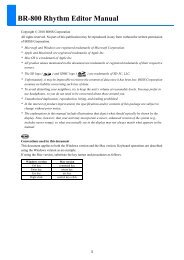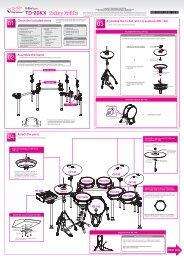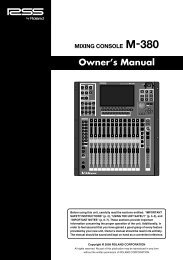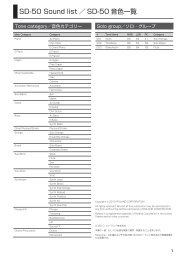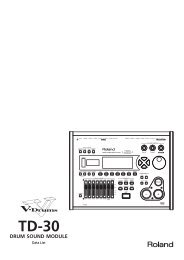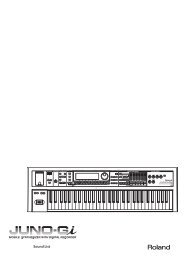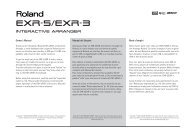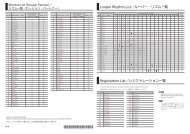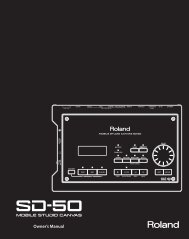GAIA Exploring Sound (PDF) - Roland Corporation Australia
GAIA Exploring Sound (PDF) - Roland Corporation Australia
GAIA Exploring Sound (PDF) - Roland Corporation Australia
Create successful ePaper yourself
Turn your PDF publications into a flip-book with our unique Google optimized e-Paper software.
Frequency<br />
Let’s re-phrase that. Firstly, as you played higher notes the waves<br />
appeared “more frequently!” Would that suggest that higher notes<br />
“have a higher frequency?” Of course!<br />
Secondly, each octave was an exact multiple of the first. Move up<br />
an octave and you’ve doubled the frequency. Move up two<br />
octaves and you’ve multiplied the frequency by 4. Exciting?<br />
To put that as a simple calculation, each time you move one<br />
octave higher you double the frequency of the waveform!<br />
By the way, we measure frequency in cycles per second. That is,<br />
if a tuning fork vibrates 440 times in each second we say it is<br />
vibrating at 440 cycles per second. We also use a specific name<br />
for this; the Hertz, named after a German physicist, Heinrich<br />
Hertz. 440 cycles per second equals 440 Hertz (or 440Hz for<br />
short).<br />
You have now seen, and can clearly understand, why we speak of<br />
musical notes of a higher, or lower, frequency. Why we say that<br />
musical notes have a mathematical relationship with each other.<br />
This is good stuff!<br />
Perhaps we have jumped a little too far ahead. We were talking<br />
about Pitch and Wave Shapes. Let’s just concentrate on the Pitch<br />
controls to begin with....<br />
19




